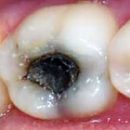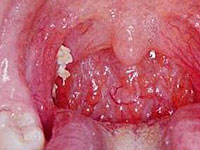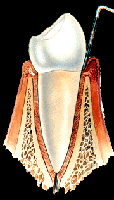Causes of the appearance and types of a teeth cyst. Detection of cysts at the root of the tooth when examining the dentist. Symptoms and complications with untimely treatment of the teeth cyst. Methods of diagnosis of odontogenic cyst.
Content
- Causes of the occurrence and types of teeth cyst
- Symptoms and complications with a teeth cyst
- Diagnosis and treatment of tooth cysts
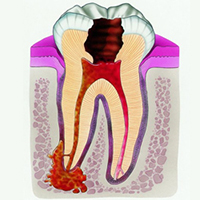 Cyst teeth — The disease, the main danger of which is that its symptoms begin to manifest itself only after reaching the pathological formation of large sizes. The disease in a launched form can cause a number of serious complications, up to death. For the timely detection and treatment of the cyca of the tooth, it is necessary to regularly undergo planned dental inspections.
Cyst teeth — The disease, the main danger of which is that its symptoms begin to manifest itself only after reaching the pathological formation of large sizes. The disease in a launched form can cause a number of serious complications, up to death. For the timely detection and treatment of the cyca of the tooth, it is necessary to regularly undergo planned dental inspections.
Cyst tooth (odontogenic cyst) — Pathological formation of spherical shape filled with serous or purulent liquid. The outer part of its shell consists of connective tissue, and the internal elevated epithelium. Localizes on the root of the tooth, can quickly increase in size. May be reborn into a malignant tumor and cause serious complications.
Causes of the occurrence and types of teeth cyst
The main reason for the formation of a tooth cyst — Penetration of periodontal fabric infection. Infection can penetrate various ways: due to injury to the tooth, in a periodontal of bacteria with blood flow in infectious diseases or through endodontic instruments as a result of unscrupulous treatment. Cysts may arise as a result of complications of chronic periodontal, sinusitis and inflammatory process under crown. The high probability of their occurrence also exists with complicated teething of wisdom teeth.
Types of odontogenic cysts
Depending on the causes of the appearance, the following types of cyst are distinguished:
- radicular — It is a complication of chronic periodontitis, can be located on the top of the root of the tooth (apex) or on its side surface (lateral periodontal);
- Follicular (depleting) — The result of infection is unrealted either a super-flow tooth;
- Keratokysta — It is formed in violation of the process of the development of a tooth from residual cells of chub formation fabric;
- Paradental (Retromotor) — It is formed at the root of the tooth of wisdom with difficulty teething as a result of chronic inflammation;
- residual — can appear on the root after removing the top of the tooth.
Symptoms and complications with a teeth cyst
Symptoms begin to manifest only by achieving pathological education relatively large sizes. In the early stages, the disease proceeds asymptomatic, without finding themselves. With an increase in the size of the cyst, there is an unpleasant feeling in the tooth when feeding food, the gums in the root area of the causation tooth can redden and swollen. With the further development of the disease, education is occurring in the projection of the root of the tooth of the fistula and the allocation of serous or purulent content from it. It is possible to increase the temperature, malaise and general weakness. In the case of a cyst, sprouted in the Gaymorov sinus, the symptoms in the oral cavity may be absent, and strong headaches appear instead. Such cysts are detected using X-ray examination.
Possible complications
Cyst in the running stage can cause bone destruction and replace its formations from connective tissue. As a result of this process, various complications may occur: purulent inflammation and inflammation of lymph nodes located near the hearth, dissolving the bones of the jaw, the occurrence of periostite, osteomyelitis and abscess granuloma. In the germination of cysts, a chronic sinus is developing in the topless sinus, and in the extensive growth of connective tissue formation, a fracture of jaws is possible. Long-term launched inflammation of cysts can lead to sepsis (blood infection). Some complications are so serious that they can lead to death.
Diagnosis and treatment of tooth cysts
The most informative is the X-ray method of survey. There are several types of X-rays: contact intrauterine radiograph, orthopantomogram and a survey radiograph in the loosecrowding projection. In addition to X-ray, electrodyagnicity is used, which allows to evaluate the degree of electroscopeability of the teeth, and a cytological examination in suspected of a transition to the malignant state.
Treatment methods
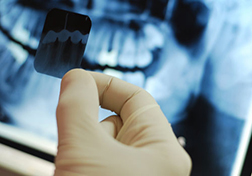
It is possible to completely get rid of odontogenic cysts only with surgery. There are two main types of operational treatment:
- Cystotomy — Coster excision and the creation of conditions for the outflow of cystic content in the cavity of the nose, mouth or the gaimore sinus. Due to the increase in hydrostatic pressure, the growth of the cyst stops.
- Cystectomy — Removal of the whole cyst through the separation of its shell from the surrounding tissues and filling out the formed cavity with a special tampon.
Depending on the state of the tooth, the type of cyst and its size, the affected tooth is treated or removed.

